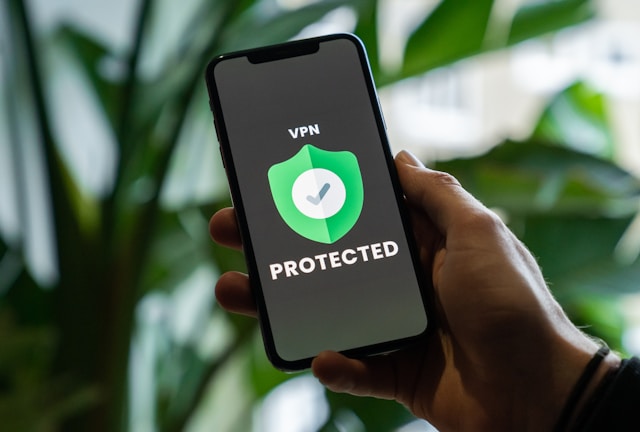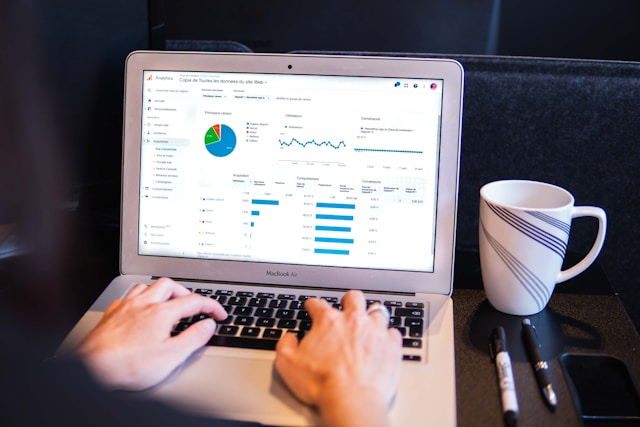Do you want to improve your geofencing accuracy? Then, you’ll need to know what factors affect the accuracy. This includes the user’s device type, environment, and geolocation technology. We’ll go into more detail about these accuracy factors to help you understand the potential problems.
Furthermore, we’ll share a few best practices when using geofencing to boost accuracy. It can improve the customer target and avoid sending geolocation marketing notifications to the wrong users.
Keep reading to learn more about everything you need to know about geofencing accuracy!

Table of Contents
Geofencing: A Quick Summary
Geofencing technology creates a virtual geographic boundary around a specific area using GPS, RFID, WiFi, or cellular data. When a mobile device enters or exits this predefined boundary, the geofencing system triggers a programmed action. This might be sending notifications, alerts, or targeted advertisements.
Furthermore, businesses use geofencing to engage customers with location-based marketing. The benefits include better targeting, more sales, and increasing the customer experience. However, you’ll need to invest in technology that supports geofencing so you can expand your toolkit.
What Is the Accuracy of Geofencing? Noteworthy Factors To Consider
Do you want to know what is the accuracy of geofencing? Then, here are the top factors that affect geofence accuracy:
- Technology used: The type of technology you use significantly impacts geofencing accuracy. For example, a global positioning system (GPS) is typically the most accurate within 5-10 meters, while cellular data can vary between 100-1000 meters in accuracy.
- Environmental factors: Buildings, trees, and other obstructions can affect signal strength and accuracy. Furthermore, urban areas with dense structures may cause signal reflections, which reduces GPS accuracy for location services. In comparison, rural areas may lack sufficient Wi-Fi and cell towers. This impacts the accuracy of geofencing. Finally, weather conditions like heavy rain or snow can also interfere with satellite signals and further affect IP accuracy.
- Device quality: The quality of the mobile devices and sensors plays a crucial role in virtual fence accuracy. Also, modern smartphones generally have more advanced and precise location capabilities compared to older models. Finally, the software algorithms used by the device to process location data can enhance or reduce overall accuracy.
- Signal interference: Interference from electronic devices, dense metallic structures, and crowded radio frequencies can disrupt signal clarity. Furthermore, multipath interference, where signals bounce off surfaces before reaching the receiver, is particularly problematic in urban environments. It leads to inaccuracies in determining the precise physical location.
- Update frequency: The frequency at which a device updates its location affects geolocation accuracy. That’s because higher update frequencies provide more precise and real-time location data. This is crucial for maintaining accurate geofence boundaries. However, frequent updates can drain battery life, so finding a balance between update frequency and power consumption is essential.

How To Improve iOS and Android Geofence Accuracy
Now, let’s look at the process of improving iOS and Android geofence accuracy. This allows you to target the right users with your marketing strategies.
Here are the top best practices for improving accuracy:
- Utilize high-quality GPS devices: Invest in modern devices with advanced GPS technology to create virtual boundaries. These devices offer higher precision and faster location updates, thereby reducing inaccuracies. Additionally, ensuring that your customers or users have updated hardware can significantly enhance overall accuracy.
- Optimize geofence size: Adjust the size of your geofences to balance accuracy and functionality. For example, smaller geofences require higher precision, while larger ones are more tolerant of slight inaccuracies. The form of geofencing you choose, you can base on research and testing.
- Use multiple location sources: Combine multiple location sources like GPS, Wi-Fi, cellular data, and Bluetooth. Using these sources together improves accuracy, especially in environments where one method may be less reliable. This multi-source approach provides a more robust and precise location tracking system.
- Regularly update software: Keep your geofencing software and applications up-to-date. These updates often include improvements in algorithms and bug fixes that enhance location accuracy. Furthermore, regularly updating ensures you benefit from the latest advancements and optimizations in geofencing technology. For instance, you’ll have access to the best geofencing API in the business.

Frequently Asked Questions
Can geofencing work indoors?
Yes, geofencing can work indoors, but accuracy may be lower compared to outdoors. Indoor environments often obstruct GPS signals. This means you need to use WiFi and Bluetooth beacons for better precision.
These technologies also rely on the proximity of network access points and beacons, which can still offer reasonable accuracy for indoor applications.
How does network density influence geofencing accuracy?
Network density can boost geofencing accuracy if more nodes capture the device’s signal. For instance, urban areas with higher network density offer more reference points for location triangulation.
However, rural or less developed areas may have fewer networks, leading to lower accuracy.
How important is software in improving geofencing accuracy?
Software plays a crucial role in improving geofencing accuracy. That’s because advanced algorithms can filter out signal noise, correct inaccuracies, and predict movement patterns.
Hence, regularly updating geofencing software ensures access to the latest improvements and optimizations.
What is multipath interference, and how does it affect geofencing?
Multipath interference occurs when signals reflect off surfaces like buildings before reaching the receiver, which causes inaccuracies in location data. It is common in urban environments and affects GPS accuracy more than other technologies.
This leads to potential errors in geofencing triggers and boundaries.

Geofencing Accuracy: Is It Difficult To Improve?
The difficulty in boosting your accuracy for geogenicting technologies is in things you cannot control. This might be the weather conditions or environment. Also, you can’t control what type of devices users are connecting with.
However, you can improve geofencing accuracy by focusing on things like improving your software and using the right technologies. For example, you can use GPS when targeting users outdoors and Wi-Fi for indoors.
Do you want the best geolocation data for your geofencing campaigns? Then, take advantage of geoPlugin for a top-tier toolkit. It will turn IP addresses into accurate geolocation data. You can use these for a wide range of industries like marketing, real estate, and more.
Sign up to geoPlugin today and begin receiving accurate data!










